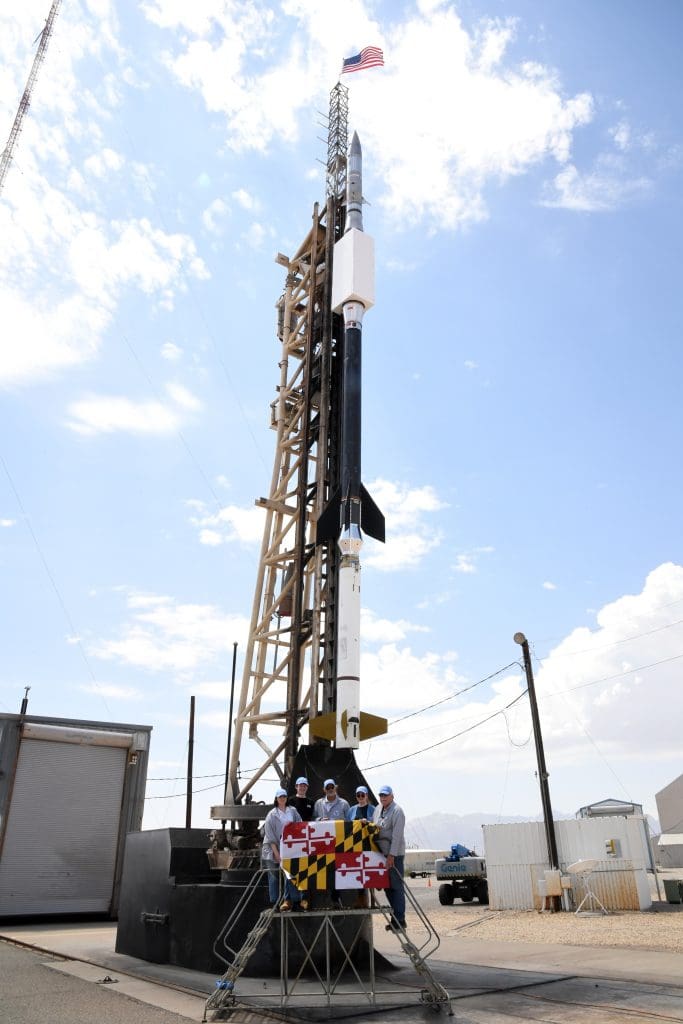
The Off-Axis Far-Ultraviolet Off Rowland-circle Telescope for Imaging and Spectroscopy (OAxFORTIS) sounding rocket mission successfully launched and collected data late Sunday night (22:00 hours MDT 25 August 2024) over White Sand Missile Range in New Mexico.
After a month in field, the JHU sounding rocket team led by Graduate Student, Mackenzie Carlson and supported by her cohort of Isu Ravi and Jack Ford — overseen by Systems Engineer Russell Pelton and Research Professor Stephan McCandliss — successfully observed the mysterious population of hot UV emitting stars in the Globular Cluster (GC) M10. GC are primarily filled with hundreds of thousands of cool old “red” stars . Understanding how a smattering of bright hot stars, which are usually young, can form among such an old stellar population is the mystery.
The sounding rocket achieved an apogee of over 272 kilometers, which provided the more than 360 seconds of exoatmospheric time above 100 km required for UV observations to be free from atmospheric attenuation. Multiple spectra were observed from hot stars in the GC. They were acquired autonomously using our Zero Order Monitor Interface (ZOMI) to the NextGen MicroShutter Array (NGMSA) that was developed in collaboration with NASA’s Goddard Space Flight Center. The initial development of the ZOMI on FORTIS was led by former graduate student and now Research Professor at CU, Brian Fleming. JHU’s Instrument Development Group, including Aidan Gray, Stephen Hope and Stephen Smee, also contributed by developing the mission’s new Ethernet Via TM (EVTM) interface and an on-board data recorder.
The payload was successfully recovered on Monday morning. A subsequent turn-on revealed that still to be fully functional. The team will be requesting a reflight of OAxFORTIS for sometime in the spring of 2025 to observe another GC M13.